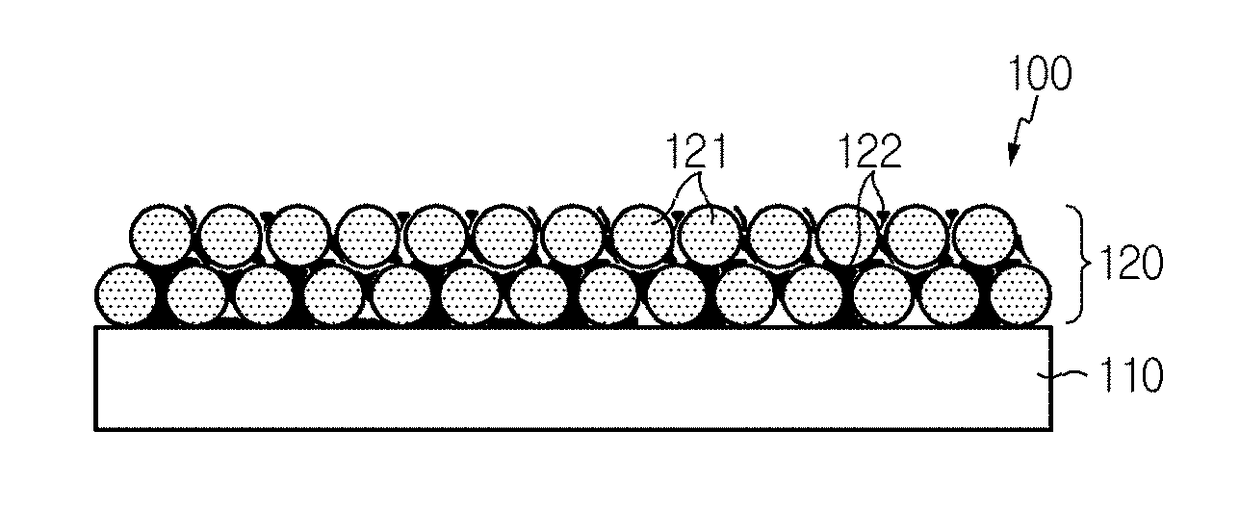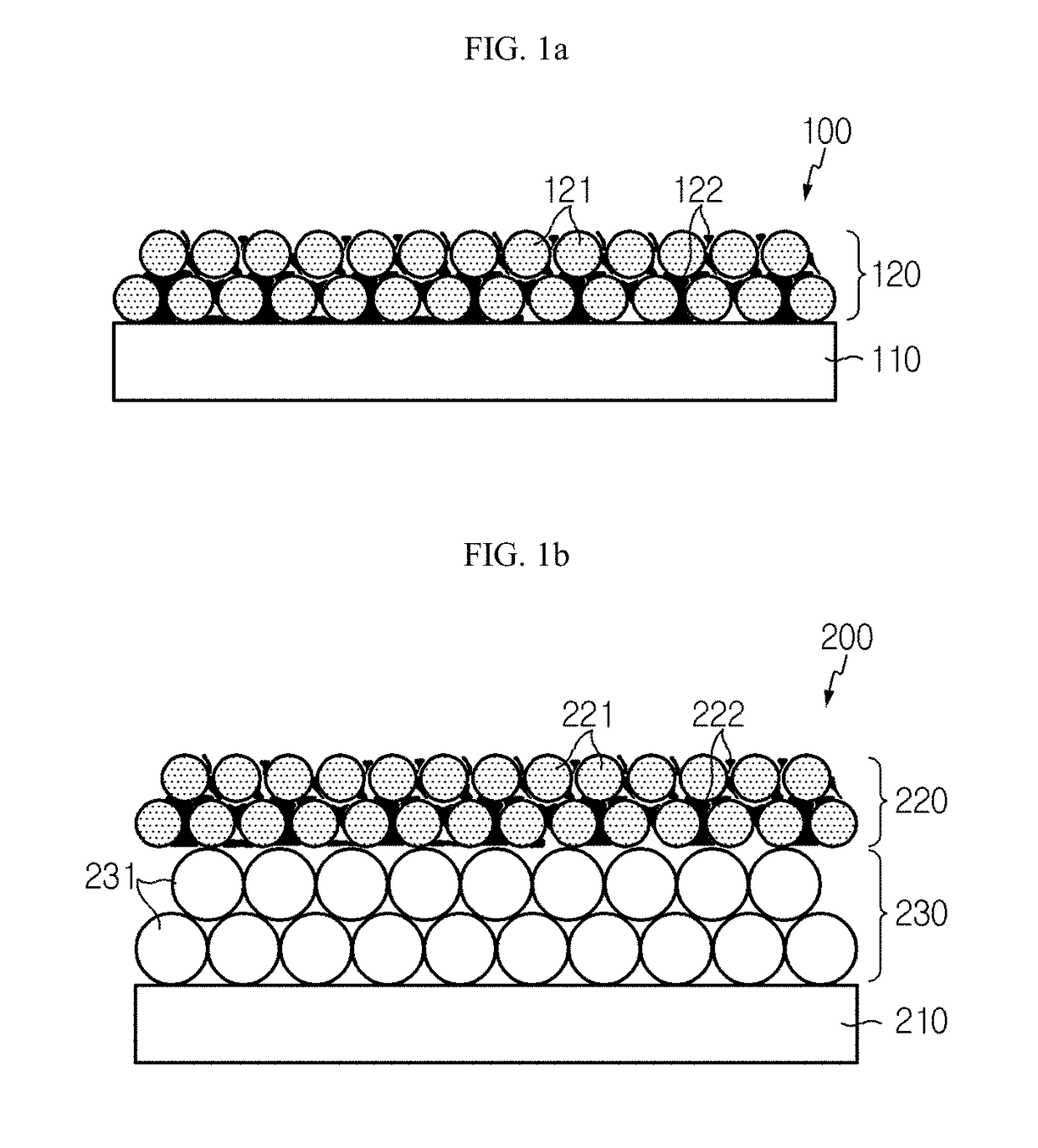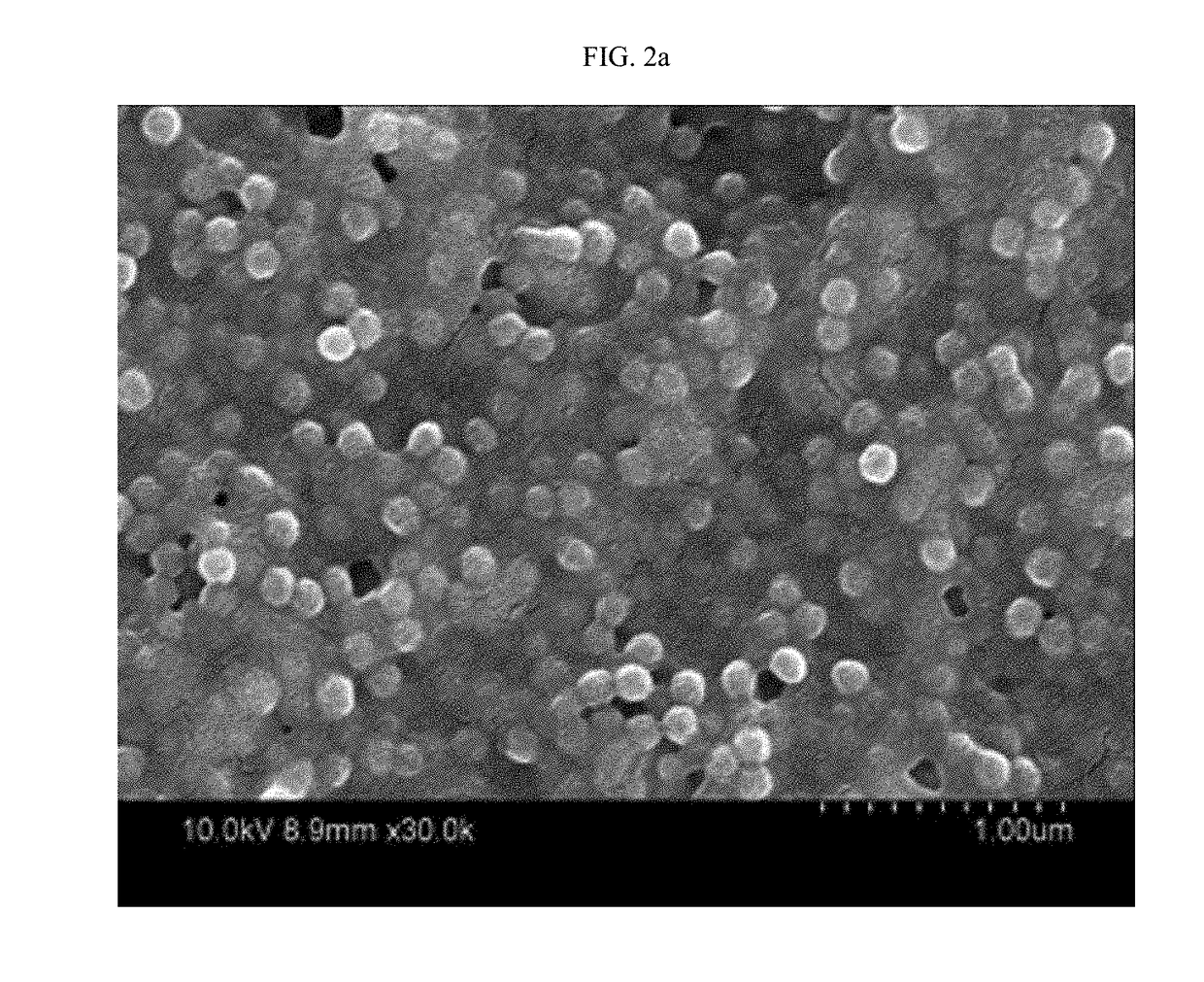Separator having electrode adhesive layer and electrochemical device including the same
a technology of electrode adhesive layer and electrode, which is applied in the direction of electrochemical generator, cell component details, cell components, etc., can solve the problems of reducing the air permeability of the separator and/or increasing the electrical resistance of the battery, and achieves excellent bindability, prevents or minimizes the infiltration phenomenon into the pores or voids, and high adhesion to the electrode
- Summary
- Abstract
- Description
- Claims
- Application Information
AI Technical Summary
Benefits of technology
Problems solved by technology
Method used
Image
Examples
example 1
[0095]First, a polyethylene porous film (Asahi, ND307B) having a thickness of 7 μm was prepared as a porous polymer substrate.
[0096]Next, 7000 g of inorganic particles (Al2O3, Nippon Light Metal, LS235, 500 nm) and 105 g of carboxymethyl cellulose (CMC) were introduced to water as a solvent and then crushed and pulverized by using a ball milling process for 3 hours to obtain slurry. The slurry included inorganic particles dispersed homogeneously therein and 700 g of a binder (acrylic resin, TRD202A) was introduced thereto before coating, and then the slurry was agitated for 1 hour. The slurry was coated onto both surfaces of polyethylene to a thickness of 3 μm through a dip coating process and then dried at 80° C.
[0097]Then, 1800 g of organic particles (PVdF-HFP, Solvay, XPH883, Tm 100° C., average particle diameter 300 nm, solid content 25%) and 1125 g of an acrylic resin binder (acrylic resin, JSR, TRD202A, Tg−5° C., solid content 40%) were introduced to water as a solvent to obta...
example 2
[0098]A separator having an electrode adhesive layer was obtained in the same manner as Example 1, except that 2520 g of organic particles (PVdF-HFP, Solvay, XPH883, Tm 100° C., average particle diameter 300 nm, solid content 25%) and 675 g of an acrylic resin binder (acrylic resin, JSR, TRD202A, Tg−5° C., solid content 40%) were used (30 wt % of the acrylic resin binder based on the combined weight of the organic particles and the acrylic resin binder).
example 3
[0099]A separator was obtained in the same manner as Example 1, except that 40 wt % of the acrylic resin binder was used based on the combined weight of the organic particles and the acrylic resin binder.
PUM
| Property | Measurement | Unit |
|---|---|---|
| glass transition temperature | aaaaa | aaaaa |
| dielectric constant | aaaaa | aaaaa |
| surface roughness Ra | aaaaa | aaaaa |
Abstract
Description
Claims
Application Information
 Login to View More
Login to View More - Generate Ideas
- Intellectual Property
- Life Sciences
- Materials
- Tech Scout
- Unparalleled Data Quality
- Higher Quality Content
- 60% Fewer Hallucinations
Browse by: Latest US Patents, China's latest patents, Technical Efficacy Thesaurus, Application Domain, Technology Topic, Popular Technical Reports.
© 2025 PatSnap. All rights reserved.Legal|Privacy policy|Modern Slavery Act Transparency Statement|Sitemap|About US| Contact US: help@patsnap.com



